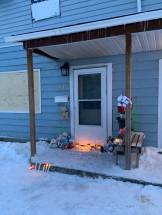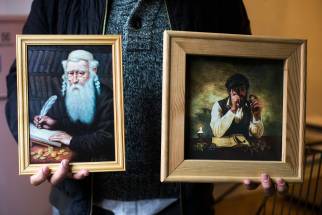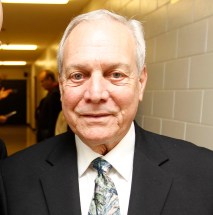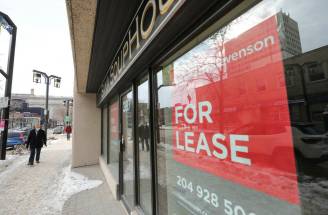Getting to the art of the matter Winnipeg-born Michael Rubenfeld helping to keep Ukraine’s broken hearts beating in his adopted Polish home
Read this article for free:
or
Already have an account? Log in here »
To continue reading, please subscribe:
Monthly Digital Subscription
$0 for the first 4 weeks*
- Enjoy unlimited reading on winnipegfreepress.com
- Read the E-Edition, our digital replica newspaper
- Access News Break, our award-winning app
- Play interactive puzzles
*No charge for 4 weeks then price increases to the regular rate of $19.00 plus GST every four weeks. Offer available to new and qualified returning subscribers only. Cancel any time.
Monthly Digital Subscription
$4.75/week*
- Enjoy unlimited reading on winnipegfreepress.com
- Read the E-Edition, our digital replica newspaper
- Access News Break, our award-winning app
- Play interactive puzzles
*Billed as $19 plus GST every four weeks. Cancel any time.
To continue reading, please subscribe:
Add Free Press access to your Brandon Sun subscription for only an additional
$1 for the first 4 weeks*
*Your next subscription payment will increase by $1.00 and you will be charged $16.99 plus GST for four weeks. After four weeks, your payment will increase to $23.99 plus GST every four weeks.
Read unlimited articles for free today:
or
Already have an account? Log in here »
Hey there, time traveller!
This article was published 18/04/2022 (1330 days ago), so information in it may no longer be current.
KRAKOW — On Feb. 15, nine days before Russia invaded Ukraine, Oksana Pyzh and her husband packed up their kid, their car and a few of their things, and began the long drive west from their home in Kharkiv, towards Poland, stopping every few hours along the way. A leisurely pace, compared to the flight of those who came after, but there were no bombs then.
Ukrainian Refugee Crisis

Posted:
As the world watches in horror the Russian invasion of Ukraine, and as Manitobans prepare to open their arms to refugees, the Free Press has sent writer Melissa Martin and photographer Mikaela MacKenzie to Poland to report on the largest refugee crisis in Europe since the Second World War.
Still, it was obvious to Pyzh that something bad was about to happen. Russia was massing its troops on the border. Foreign countries were moving diplomats out of Kyiv and U.S. President Joe Biden warned of an imminent invasion. Pyzh’s friends weren’t too worried — “nothing will start,” they said — but she was gripped by an urgent and terrible feeling.
“I’m a really anxious person,” she says, bluntly. “In my world, there is nothing so terrifying like war.”
Mentally, she’d given herself another reason to go. Six years earlier, Pyzh, an architect and artist, had held an exhibition of her works at a gallery in Warsaw, a collection of pieces reflecting on what Ukraine had been left with after the Soviet Union collapsed. One of the largest paintings from that show was still in Poland, and she thought she might take it back.
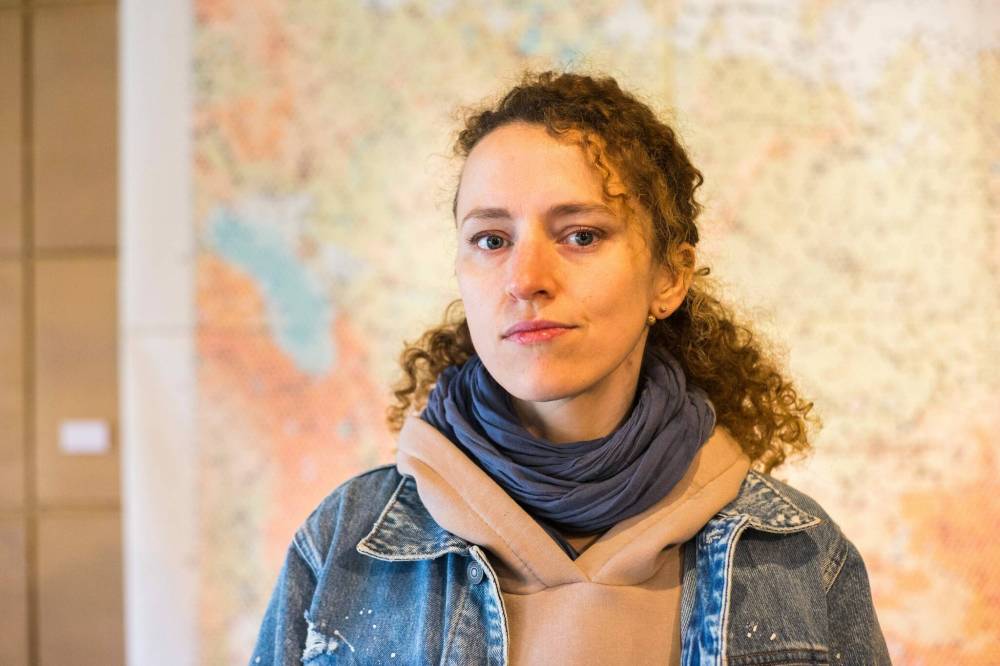
“It was like, ‘OK, in case the war won’t start, at least we will take my paintings from Warsaw,’” she says. “That was Plan B.”
The war started. She got the painting. Now, she and her family have found a temporary home in a town just outside Kraków. And thanks to a group of allies with a Winnipeg connection, that painting has become the heart of a new exhibition of contemporary Ukrainian art, one of the first of its kind in Poland during the war.
“I think it’s our work right now to do something that should put attention to this theme (of war), and that’s all we can do,” she says of Ukrainian artists. “It’s now to change the attention of the European Union and all people around the world.”
It’s a cloudy afternoon in Kraków, grey and cool and drizzled by rain. We are sitting on the sculpted terrace of the Manggha Museum, which usually hosts exhibitions of Japanese culture but is now home to Fight With Art, an assemblage of works by Ukrainian artists, most of whom are still living — and some literally fighting — inside Ukraine.
Pyzh’s large canvas forms the centrepiece of the exhibition. It’s a map of Ukraine, rendered through dots of paint; inside each dot is a Cyrillic letter drawn from the text of the 1991 Belovezh Accords that dissolved the Soviet Union. But the words are illegible to the viewer: it’s a map, but not a map. A text, but not a text.

“You can’t read it, the same as you can’t read any potential on these political documents,” she says.
The exhibition is the second of at least three such events organized by FestivALT, a Kraków-based Jewish arts and activism collective that has thrown itself into Ukrainian solidarity work since the war started. Since opening on April 4, Fight With Art has garnered a swell of local press in Kraków; visitors have been coming, and they’ve been talking.
“There’s a lot of momentum,” says FestivALT co-founder Michael Rubenfeld, who helped launch the show.
Rubenfeld knows, as well as anyone can, how art can be a powerful vehicle to explore identity, disruption and trauma. In a way, that’s what brought him to Poland six years ago, returning to the country his grandparents had left after surviving the Holocaust. It was a personal journey and a creative one. And now, it has put him in a perfect position to help.
That journey began in Winnipeg. Rubenfeld grew up in Garden City, in what he calls a “pretty normal Jewish family.” As a youth, he went to Hebrew school and felt totally disconnected from his family’s roots in Europe: everything he heard about Poland was negative, he says, an expression of the collective trauma carried by those who had survived the war.
“The kind of education I received was the Bible, the Holocaust and then the formation of Israel until now,” he says, chatting over coffee at a dim-lit cafe in what was once the Nazi-era Jewish ghetto. “There was this insane 2,000-year gap that was just not talked about. It was very strange. I just didn’t know anything about the contemporary version of my culture.”
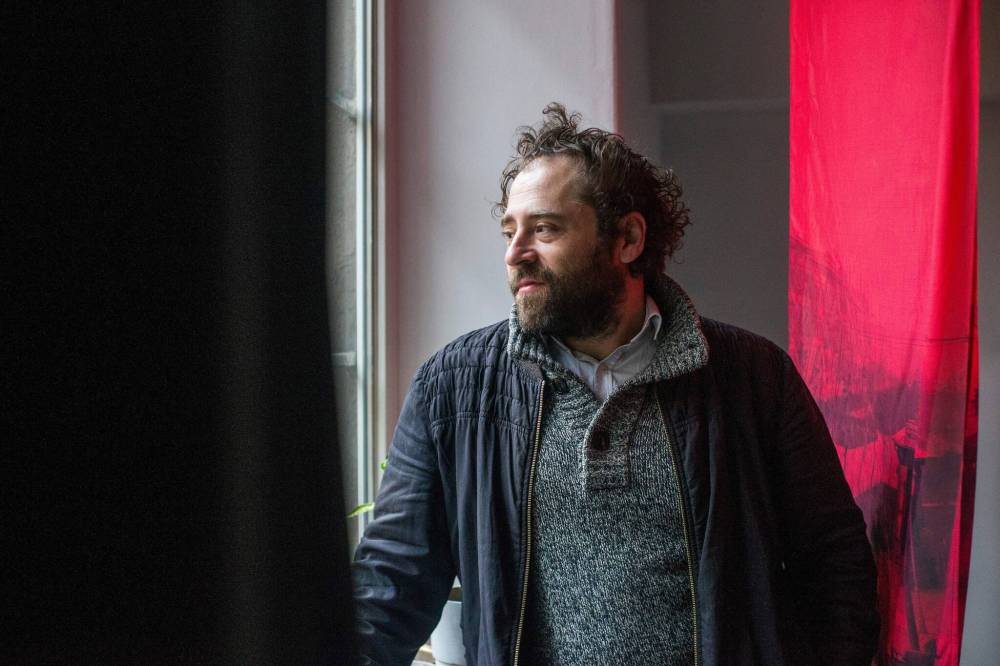
As a teen, he moved to Toronto, where he became a successful actor and theatre producer. For much of his career, his work didn’t explore Jewish identity all that much: “I really didn’t understand why being Jewish mattered,” he says. “When I think about my version of Jewish culture, it’s like, Garden City… and I was like, I don’t feel like this is who I want to be.”
But after meeting his wife, Magda, in Montreal, his life changed. She’s also Jewish, but originally from Poland; after getting married, they had to “choose a country,” Rubenfeld says. The thought of returning to his grandparents’ homeland intrigued him; he saw an opportunity to restore a connection to a place and a culture that had been severed decades ago.
“Seventy per cent of Europe’s Jews were in Poland, and they were here for a reason,” he says. “They liked Poland, they liked living here. And it started to get bad in the 1930s, and of course it was bad in different periods of time the way it was bad for Jews all over the world. But this was the place that Jews wanted to live. We don’t think about it that way anymore.”
In Kraków, he and his wife got to work. They co-founded FestivALT, an arts and activism collective dedicated to bringing new vibrancy to contemporary Jewish culture in Poland. Their projects are challenging and sometimes a little cheeky, but always focused on engaging new conversations about identity, antisemitism and the preservation and renewal of memory.
They opened a small gallery space in the heart of the former ghetto, where Nazis forced 20,000 Jews into an area with just 320 buildings. Next door to their gallery is the former headquarters of the Jewish resistance; across the street is a building that housed a hospital, before Nazis slaughtered its patients and sent everyone left in the ghetto to the camps.
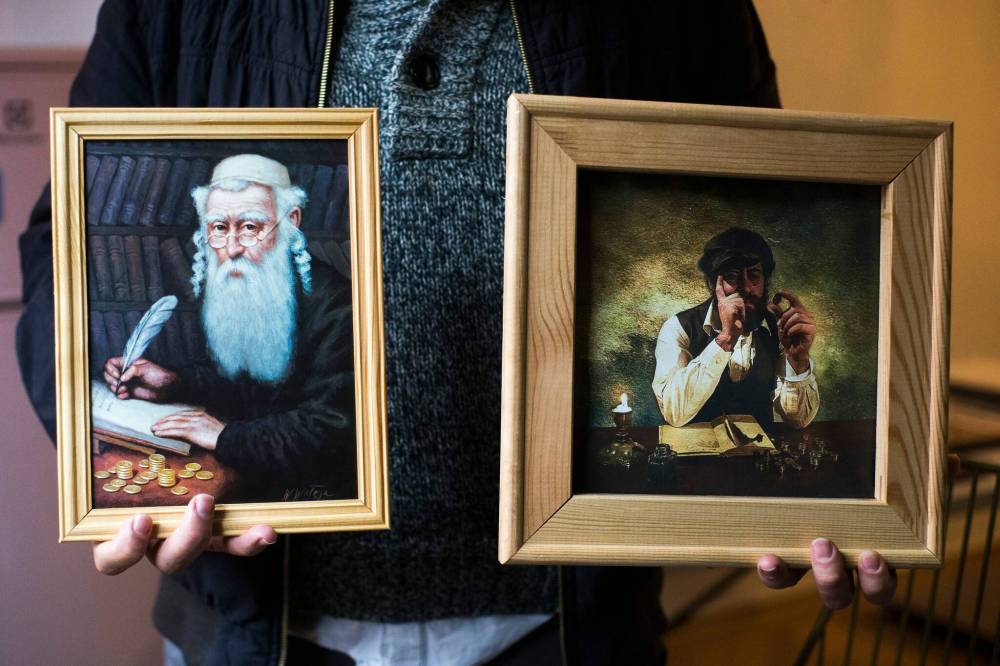
And Rubenfeld found that he loved living in Poland, where he could walk past old synagogues and visit cemeteries that told stories of generations of Jews, many of whom had lived full lives that were never touched by war. He felt the resonance of a culture that had thrived here for centuries — as an artist — that offered fertile ground to create and play and explore.
“This has been a really important place for me, in terms of how I understand myself as a Jew,” he says. “I think (Jewish) people coming back here and developing positive relationships to this place, and to themselves as Poles, is actually a very useful way to negotiate that history and maybe reconnect to some of those positive elements of that history.”
Now, FestivALT’s gallery space, once part of an open-air prison, is a place of refuge. Since the start of the war, they’ve used it to host weekly social drop-ins for Ukrainian seniors, offering friendship, legal help and tutoring in the Polish language. And soon, they plan to open its doors as Art Station for Ukraine, a working studio space for displaced artists in Poland.
That solidarity work began, as so much of the humanitarian effort here has, with a grassroots connection. On the day the war started, Rubenfeld got a text from a playwright friend in Toronto, asking for help getting a Ukrainian woman, Alina Viatkina, safely out of the country; like so many people in Poland, Rubenfeld immediately offered his own home for her to stay.

Soon, Viatkina, a former combat medic, was working on her own initiative to help, organizing deliveries of medical supplies and safety equipment for Ukrainian volunteer fighters. Rubenfeld began to lean on his own theatre contacts to help: he was soon sought out by Canadian media, and the effort took off. Within six weeks, they’d raised more than $200,000.
They created a special bank account through FestivALT to help manage donations.Before long, Rubenfeld’s home in Kraków became a way station for non-lethal aid, from bandages to boots, dropped off for a few days before it would be collected and driven to Ukraine. Refugees came to stay at his home too, including Viatkina’s mother and a cat.
“It was really crazy for a while,” he says with a laugh, shaking his head.
By then, he and other members of the FestivALT collective had also started thinking about what else they could do, as an arts group, to support the humanitarian effort. The obvious answer was to create platforms for Ukrainian artists; they held the first such exhibition at their own gallery last month, before organizing the larger show at the Manggha Museum.
Now, they’re planning a third exhibition, one that will present works by artists stuck in bombarded Kharkiv, next to images of the artists’ living situations. They are building towards a global charity auction of Ukrainian art.
It isn’t just about the art, or the images. It’s also about something deeper, which Rubenfeld knows from his own experience.
“Right now there’s so much narrative around the fighting and the horror, but I feel like humanity operates in the culture of a place,” he says. “Artists are generators of culture. And to be able to actually allow the culture to continue to operate, and the art is a representation of the humanity of the culture, you can feel that when you go into the exhibition.
“Right now there’s so much narrative around the fighting and the horror, but I feel like humanity operates in the culture of a place.” – Michael Rubenfeld, FestivALT co-founder
“It’s not even a celebration (of Ukrainian art), so much as an insistence. An insistence to remember these are people. People don’t just live and die, they actually do things. They make art. They’re alive.”
So the art of Ukraine will continue wherever Ukrainian artists are, from Kharkiv to Kraków and places beyond. Since coming to Poland, Pyzh has acquired some canvases, which she plans to use to create more large works while she’s unable to go home to Kharkiv, which is bracing now for what is expected to be a renewed Russian offensive.
But making art at this moment is heavy. Her hometown of Kharkiv is being ravaged; for nearly six weeks, her parents stayed in her childhood home of Rubizhne, in the Luhansk area of southeastern Ukraine. Videos taken this week show the town has been nearly obliterated in the fighting; food and water ran out last month and residents had to melt snow to survive.
When the electricity there failed, she could only speak to her parents for a minute or two each week, to conserve their phone battery. She never knew what to say in that minute. They’d tell her they were managing, that they’d eaten, but she was never sure if that was the truth, or if they were just saying that so she wouldn’t worry. She felt helpless and afraid.
Days before we met, Russian shelling blew up a nitric acid storage tank in Rubizhne, spewing a toxic cloud into the sky.
By then Pyzh’s parents had been able to flee to a safer location in western Ukraine. The relief that flowed through her when they escaped is hard to describe: “I’m just… ‘phew,’” she says, transmitting that last word with an exhale through her whole body. But the war continues, and that makes it hard to tend the mental space which creativity needs, to plant seeds.
“I can’t understand how people live when they have families in Mariupol, because all these numbers of people who can die in one day or two days, it’s huge,” she says. “And I’m very scared about such things as (apparent civilian massacres in) Bucha is everywhere. It’s like the most terrifying (things) in a human being that can be opened, is opened during the war.”
“I can’t understand how people live when they have families in Mariupol, because all these numbers of people who can die in one day or two days, it’s huge.” – Oksana Pyzh
Still, with her parents safe, she’s begun to make some sketches. Begun to think about what her next piece will look like and what she wants to express. The fact that it will be about the war almost goes without saying — “I don’t understand how you can work on a theme something different except this one,” she says — but that, too, is a complicated prospect.
She points to Picasso’s 1937 painting, Guernica. It was a tortured response to the fascist bombing of northern Spain, an antiwar piece that was used at the time to raise money for humanitarian relief. It is also a work that has become iconic, analyzed and interpreted for generations, the popular understanding of its meaning continuously reconsidered and refined.
It’s hard to make such layered art about war, when you’re living through it. But somehow, she has to try.
“With art, right now the most heavy thing to do is not to be too straight in your message. When you’re just making (a) picture of Putin with blood…” she trails off, for a second. “Art should be working in 10 years and 20 years, not just for one day. It’s very hard right now not to be too literal.”
She has hope, she says, though she says the word with a lilt of sadness. Everything feels so broken. Before the war, she was focusing on work about the ecological crisis facing the planet, and it’s not like any of that has gone away. Besides, war is an environmental catastrophe in its own right, she notes, as with the nitric acid explosion near her parents’ home.
But yes, despite that — even through that — she does have hope for Ukraine.
“All of us just need to find our own identity right now, and find our place,” she says. “Because we were somewhere in the middle, always. But right now, this war, the only positive of this war have is we will probably have a different place in this world for our country. It will be more a part of Europe.”
melissa.martin@freepress.mb.ca
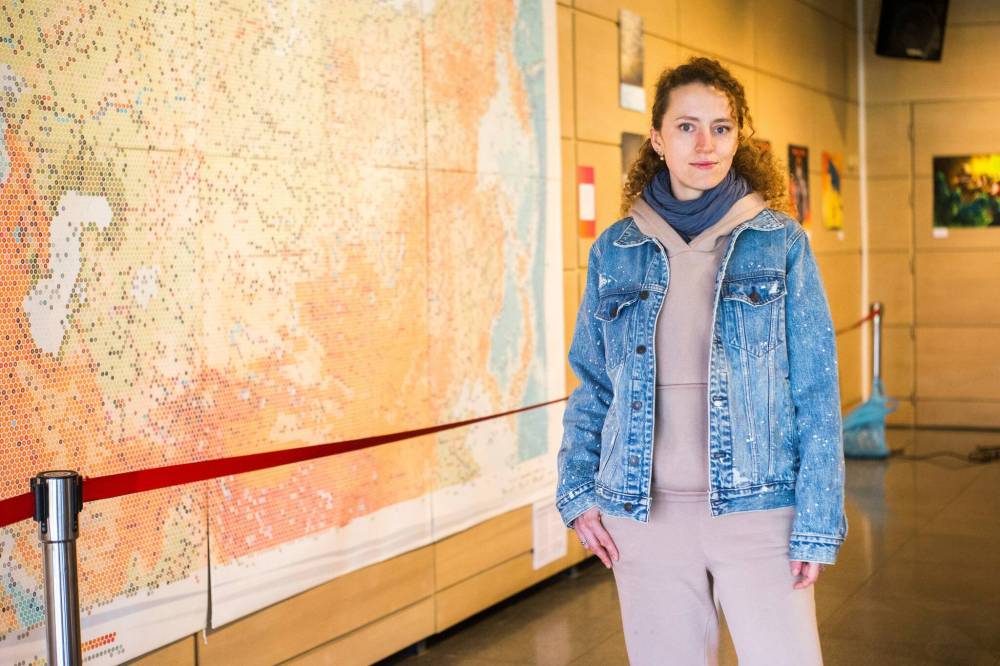
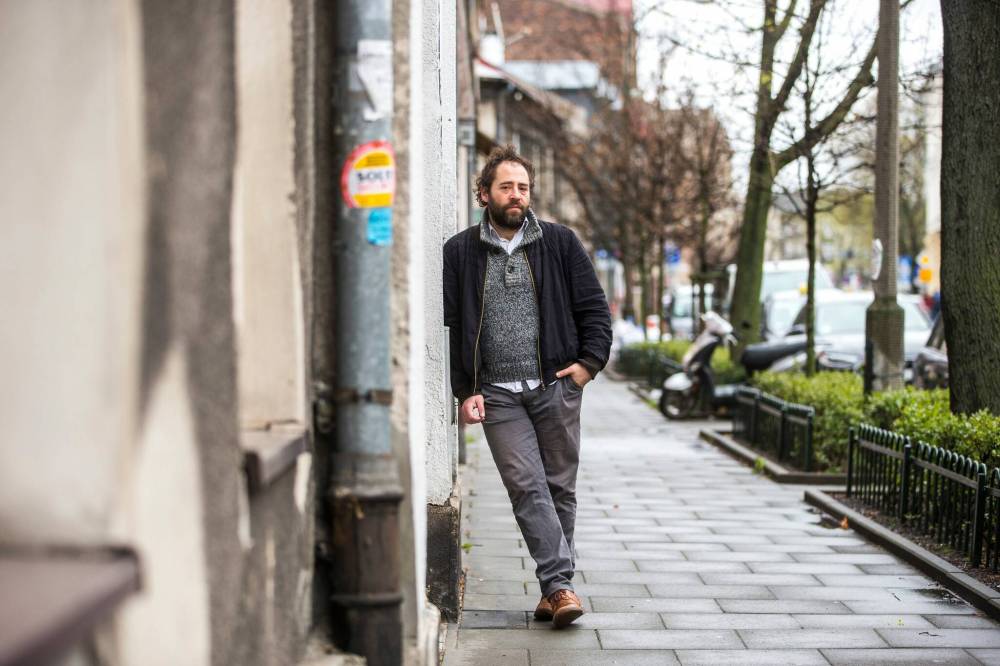

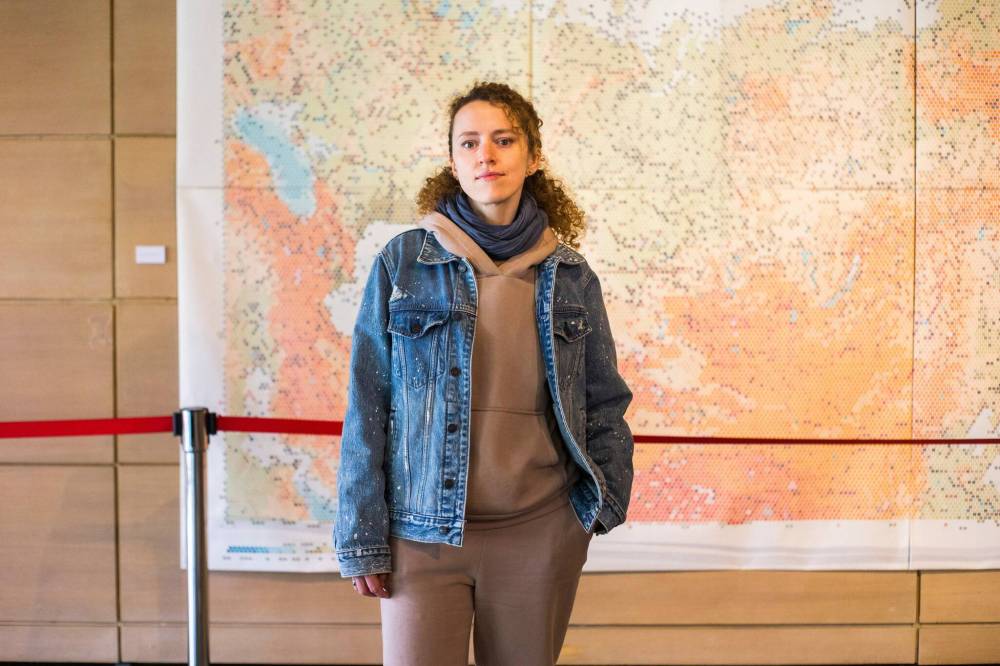



Our newsroom depends on a growing audience of readers to power our journalism. If you are not a paid reader, please consider becoming a subscriber.
Our newsroom depends on its audience of readers to power our journalism. Thank you for your support.




